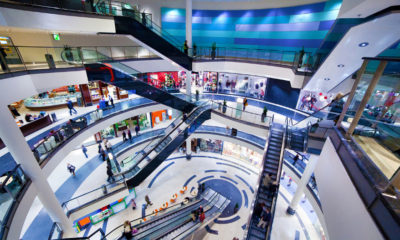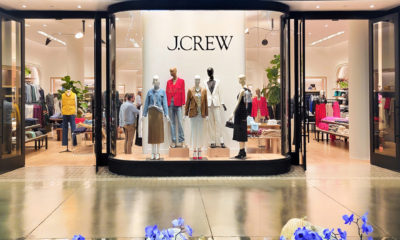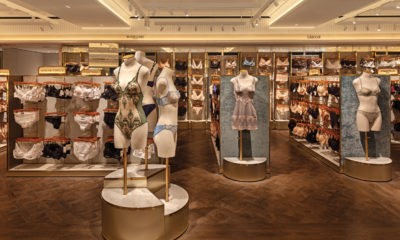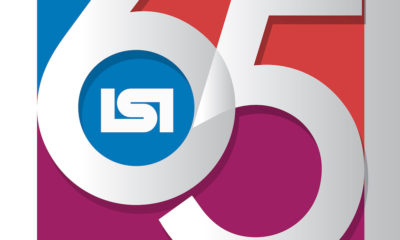The technology of illumination is changing constantly. Right now, the most exciting technology is the energy-efficient, long-lasting LED. But that doesn’t mean it’s an appropriate fit for all your store’s lighting needs – including store windows.
Lighting designers insist that a window design shouldn’t start with the choice of a light source but with the intent of the window: the depth, framing, focus, drama and intensity that best tells the story.
“The purpose of the window is to make miniature theater, and it comes together when it’s lit properly,” says veteran window design consultant Lucy Ann Bouwman, now manager of creative visual merchandising at the Tiffany & Co. flagship store in New York.
“The right lighting creates memorable images by highlighting the foreground, background, frame and focus,” agrees architectural lighting designer Paul Gregory of Focus Lighting (New York), whose work has included Manhattan street-front windows for H&M on Fifth Avenue, Toys “R” Us in Times Square, Frye boots in SoHo and Carlos Miele in the Meatpacking District. “And people react to that. It’s the difference between a painting in the Louvre and a cartoon in the newspaper.”
Different Tools for Different Settings
Designers say they achieve that in the way they layer light, to create brightness and shadows, and in how they focus the most intense light beams, to draw the passerby’s attention.
“To light something in a theatrical way, you need to work with different intensities of light, different beam spreads, as opposed to a flat wash of light,” says Bouwman. “And that’s still best achieved with the halogen family of lights.”
Freelance lighting designer Adam Hayes of Illuminations by Hayes (New York) says he favors halogen PAR-38s and PAR-30s as “workhorses with good light quality, lumens-per-watt and choice of beam spreads. The downside is, they don’t have a long lamp life.”
For small windows, he likes the tiny pin dot MR-16 halogen that offers a variety of beam spreads, from wide to as narrow as seven degrees.
Bouwman deals with small jewel-box windows all the time. “If I’m lighting a diamond ring,” she says, “I like the tighter beam from the MR-16 or the new AR-111. It directs the eye on the object, and not elsewhere in the window.”
Bigger windows call for different approaches. “Saks’ windows on Fifth Avenue are six feet deep,” says Focus Lighting’s Gregory, “so to light them properly, you have to analyze what the feature products are – where the retailer wants the shopper’s eye to go – then create a contrast ratio between the product and what’s behind it.”
Hayes designs windows for Cole Haan that are so tall he needs a 12-foot ladder to climb up to the light fixtures. In a window that big, he says, an MR-16 won’t deliver much of a punch because the light source is too far away from the object.
“For a recent installation, I wanted to throw light on only one pair of shoes in the window,” he says. “So I used the AR-111, which is essentially a PAR-36 fixture with a reflector behind the bulb, so I could throw a tight light beam from further away.”
In some cases, designers like metal halides for their long life and color rendering properties. “In grocery stores, metal halides produce great color rendering on foods,” Bouwman says. “However, in fashion, metal halide does not romance the presentation.”
To avoid a washed-out effect, she says, luxury retailer Ferragamo has paired compact metal halides, to focus on the products in its window, with halogens, which provide an incandescent glow.
The Push to LEDs
More and more, though, designers are being encouraged to eschew all their tried and true light sources in favor of LEDs, which have become the operations departments’ darling because of their long life-span and lower energy costs.
Gregory says there are two reasons why LEDs are a great solution for store windows: their improved color spectrum and maintenance. “LEDs provide 50,000 hours of life, roughly eight-and-a-half years, and the light will be as productive in the ninth year as on the first day,” he says.
But long life and lower energy costs still don’t make them the right light source for every application. “LEDs are simply not yet an all-purpose light source,” says Bouwman. “They still produce a dull, blunt kind of light. There’s not enough luminescence or tight beam control. They don’t make the window pop.”
Nor are they yet versatile enough. Hayes says he uses an MR-16 with a glass linear spread beam filter for a fashion retailing client. “It provides an elongated beam that allows me to light a mannequin with only one fixture. But the heat build-up and power consumption are incredibly high,” he says. “I would like to switch to something with a lower wattage, but I haven’t found the LED to match the incandescent lumen output.”
Bouwman also mentions LEDs’ inability to work well with heat, especially in sunny windows without vents or heat escapes.
Gregory says it still requires education and collaboration to get a retailer to see beyond only the cost savings. “After all, we’re the curator of the visual image,” he says, “and so a lot of what we’re doing is teaching: this angle works, this angle produces glare. If all you see is the reflected light, you don’t see the texture or color of the product.”
Many agree there also needs to be more collaboration between the window designers or merchants and the lighting designer. “Usually, I show up to light a window with no previous knowledge of how the window is laid out or the theme or intent they have in mind,” says Hayes. “No matter how fabulous the product might be, it will always be enhanced by the proper use of good lighting – or ruined by improper placement.”
“The lighting designer is only trying to show the product in the best possible light,” he says. “So don’t second-guess the experts you hired in the first place!”

 Headlines1 week ago
Headlines1 week ago
 Photo Gallery20 hours ago
Photo Gallery20 hours ago
 Headlines2 weeks ago
Headlines2 weeks ago
 Headlines2 weeks ago
Headlines2 weeks ago
 Sector Spotlight1 week ago
Sector Spotlight1 week ago
 Headlines1 week ago
Headlines1 week ago
 Headlines2 weeks ago
Headlines2 weeks ago
 Headlines1 week ago
Headlines1 week ago













